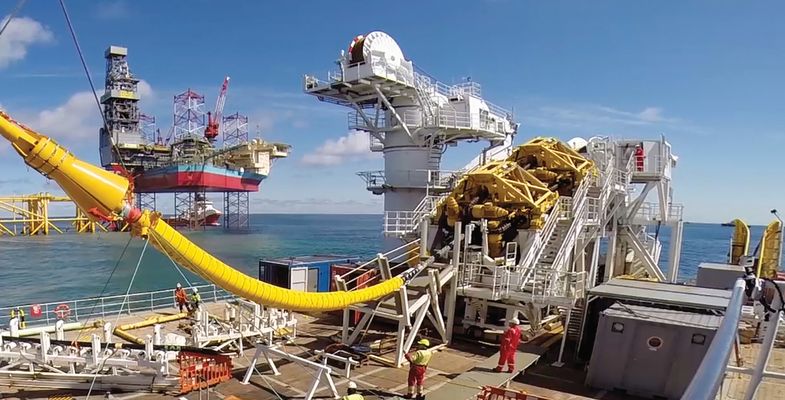ASTM D4565 Cable Sheath Abrasion Resistance Testing
The ASTM D4565 standard is a critical tool in the testing of cable sheath abrasion resistance, particularly relevant for industries such as energy and renewable energy. This service ensures that cables used in offshore platforms and subsea applications are robust enough to withstand harsh environmental conditions without compromising their integrity.
Offshore platforms and subsea operations demand high-performance materials capable of withstanding prolonged exposure to marine elements like saltwater, sand, and extreme weather conditions. Cable sheaths, which protect the core conductors from mechanical damage and corrosion, play a crucial role in maintaining operational reliability. The abrasion resistance of these sheaths is vital for ensuring that cables remain functional over their entire lifecycle.
The ASTM D4565 test method assesses how effectively cable sheath materials can resist abrasion, which is essential for preventing premature failure and ensuring safe and efficient operation. This test is particularly important in environments where mechanical wear from waves, anchors, or other equipment could otherwise compromise the integrity of subsea cables.
The procedure involves subjecting a specimen to a series of abrasive cycles using a standardized apparatus. The abrasion resistance is evaluated by measuring the weight loss or change in cross-sectional area after exposure to the abrasive action. This method provides quantifiable data that can be used to compare different materials' performance and guide material selection for specific applications.
For quality managers, compliance officers, R&D engineers, and procurement specialists involved in offshore energy projects, understanding ASTM D4565 is crucial. It helps ensure that the right materials are selected and that these materials meet the necessary standards for safety and reliability. The test results can inform decisions about material selection, design improvements, and ongoing quality control processes.
The robustness of cable sheaths directly impacts the overall performance and longevity of offshore platforms and subsea systems. By adhering to ASTM D4565 testing protocols, these critical components are better equipped to handle the rigors of marine environments, thereby enhancing operational safety and efficiency.
| Step | Description |
|---|---|
| 1 | Select appropriate cable sheath specimens according to ASTM D4565 specifications. |
| 2 | Prepare the abrasion device and abrasive wheel as per standard requirements. |
| 3 | Place the specimen on the abrasion device and set the parameters for the test cycle. |
| 4 | Conduct the abrasion cycles using a standardized procedure until specified conditions are met. |
| 5 | Weigh or measure the specimen's dimensions before and after testing to determine weight loss or cross-sectional area change. |
| 6 | Analyze the results according to ASTM D4565 criteria for acceptance or rejection of the cable sheath material. |
| Application | Description |
|---|---|
| Offshore Oil & Gas | Cable sheaths protect critical communication and power cables in offshore oil platforms. |
| Wind Turbine Farms | Subsea cables connect wind turbines to onshore substations, requiring robust sheathing against marine abrasion. |
| Solar Farms | Cables connecting solar panels to inverters must be protected from environmental stressors. |
| Marine Research & Exploration | Research vessels and deep-sea exploration systems rely on reliable cable sheaths for data transmission. |
- Eco-friendly materials that reduce marine pollution risks.
- Promotion of sustainable energy production by ensuring long-lasting equipment.
- Reduction in maintenance costs through improved durability of cable components.
- Enhanced safety for workers and the environment due to reduced failures in critical systems.





